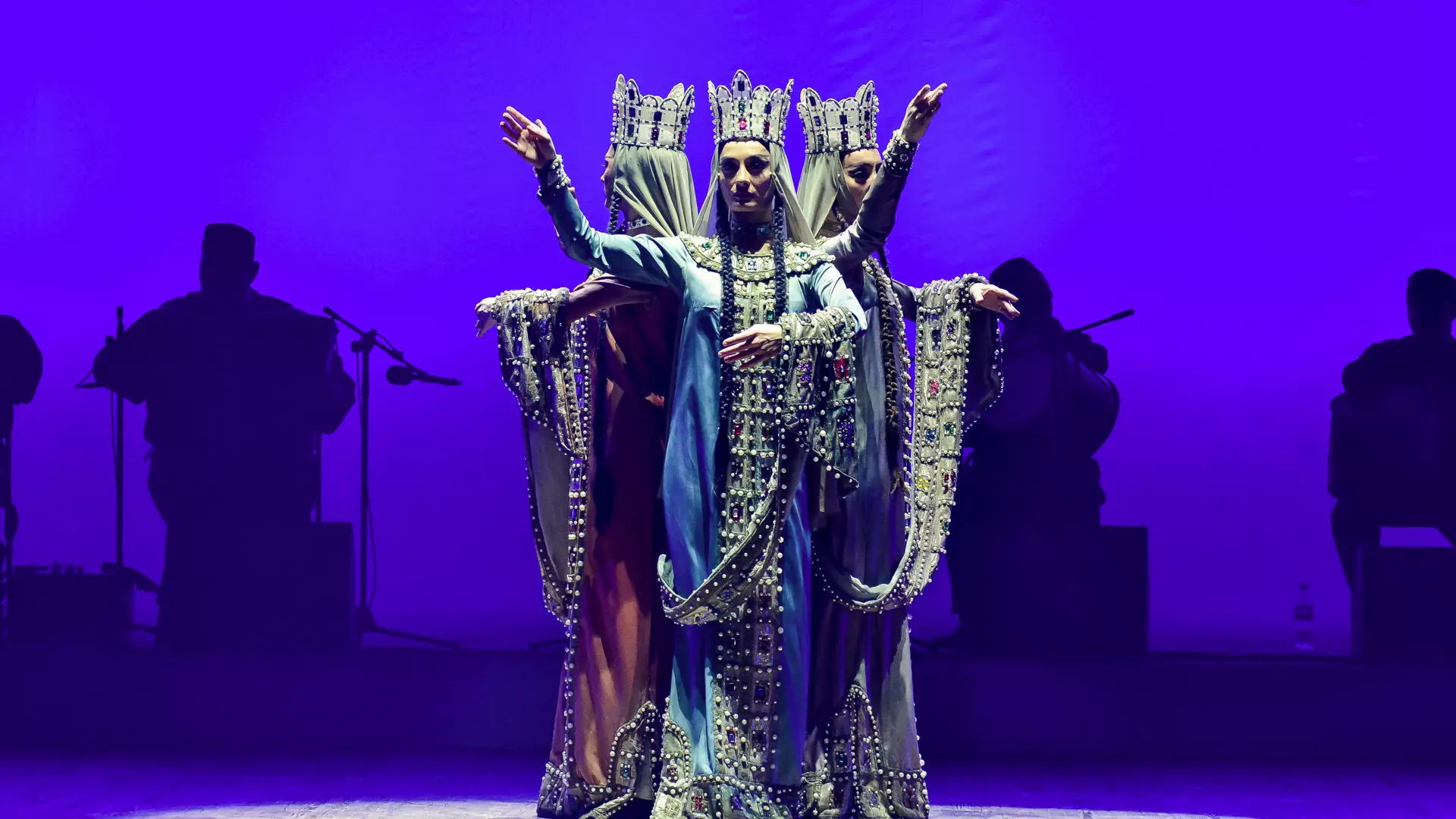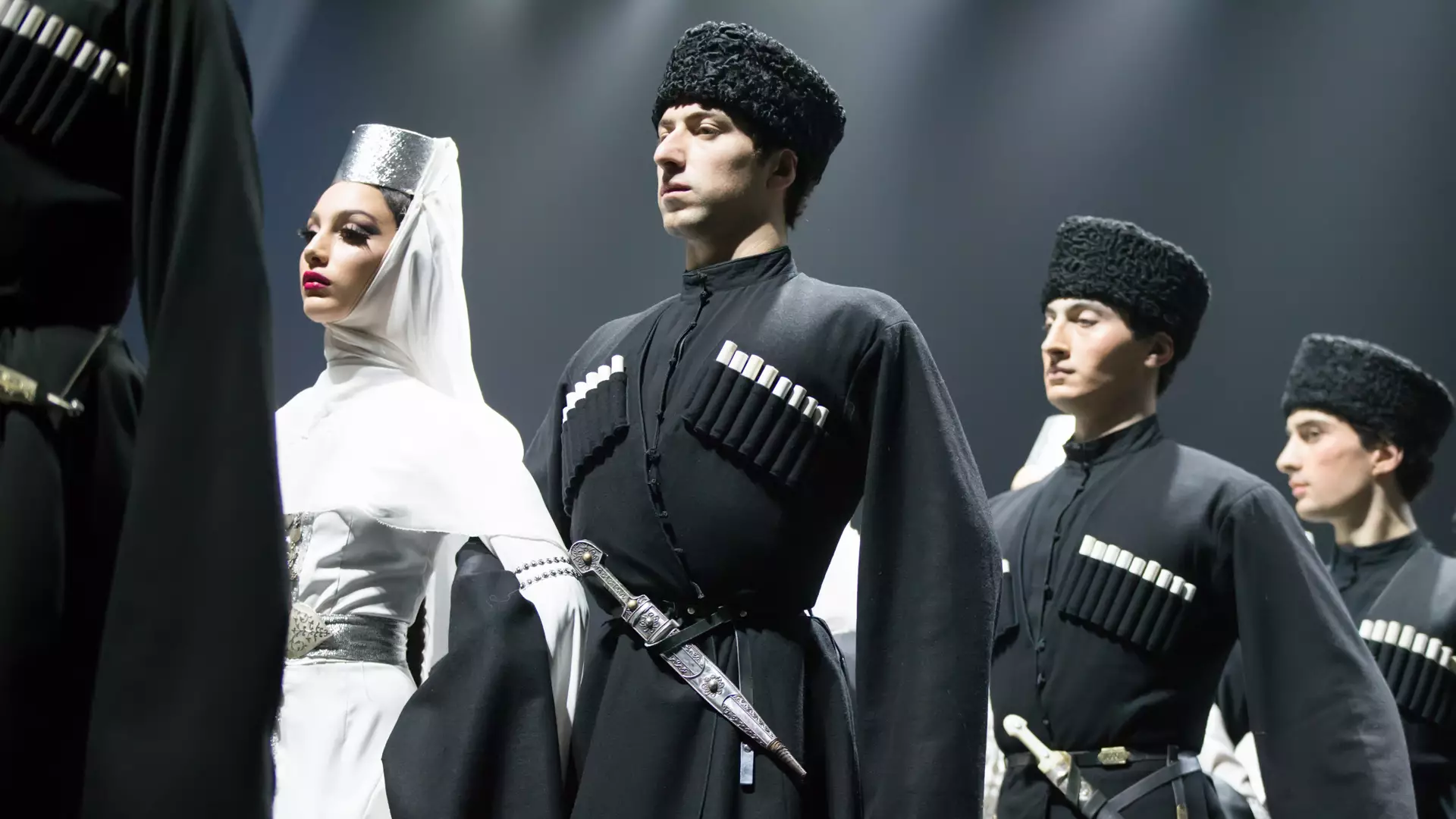Georgian National Dance
Georgian Dance before the Common Era
The rich history of Georgian folk choreography is attested in ancient literary materials which are on display in the National Museum of Georgia.
The most famous archaeological discovery from the late Bronze Age is a silver bowl from Trialeti with depictions of masked hunters standing in a row. It is about 3,700 years old and now sits in the National Museum of Georgia.
Dance art is the character composition on clay pottery discovered at the Imiri and Arukhlo hill settlements in Kvemo Kartli (6th-5th millennium BCE). This proves that Georgians, already 6,000 years ago (or even earlier), had a culture of visual performance that included dance.
The first dance, which must have been the forebearer of Georgian folk choreography, is the ritual perkhuli. It is a beautiful sight and is one of the most popular dances even today.
What Is the Secret to the Universal Acclaim of Georgian Dance?
Each dance is a story about love, heroism, friendship, and loyalty told with exquisite movements, shapes, and Georgian clothing.
Every region of Georgian has its dance, with its characteristics, step variation, and music, which is performed using various instruments, like drums, accordions, or bagpipes.
Four dances have been granted the status of Intangible Cultural Heritage Monument of Georgia, including the perkhuli, the khorumi, the Ajarian gandagana, and kartuli.
Kartuli – The Couple Dance
This dance is the crown jewel of Georgian choreography. It does not have any regional markers and is the most ancient couple's dance.
This theatrical synthesis was conceived in the 11th-12th centuries. In this dance, the women’s dance resembles the gracefulness of a swan, while the men perform different passes without moving their bodies - this is a special dance move called “gasma” in Georgian. The “kartuli” dance is the highest expression of a loving relationship, respect, refinement, and also restraint.
These strictly maintained rules of kartuli dances never fail to excite the audience:
-
The man, in all his movements, shows deference to the woman, and must not touch her or her clothing;
-
The dance is begun by the woman, and all the initiative is in her hands;
-
The man watches the women’s every move for the entire duration of the dance;
-
The man does not leave the dance until the woman has finished dancing;
-
The woman gives the sign for ending the dance by bowing, and the man responds likewise.
Perkhuli
Perkhuli is the oldest dance with singing where people join hands. Nowadays, it is a popular sight since it does not discriminate by the number of participants or their gender.
The Perkhuli is also immortalized in a Georgian phrase, “perkhulshia chabmuli”, which means to “take part in a generally pleasant endeavor.”
There are many famous versions of perkhuli. One of them is the Gurian perkhuli called “partsa”, which was performed by the Georgian choreographic Sukhishvili ensemble on the stage of La Scala in 1969. That was the first time that a folklore troupe had taken the stage of the famous opera theater in Milan.
Khorumi – A War Dance
Khorumi is an ancient, warlike dance with its roots in Adjara, but it is said to be without any regional character due to its heroism and popularity. As many as fifty dancers might be on the stage at one time to encourage a fighting spirit. Only men dance the khorumi.
Parikaoba – A War Dance
Parikaoba is also an ancient, warlike dance. Recently it has become enriched with romantic themes, which is recognized as the “Khevsuruli parikaoba”. See this battle on stage, with real swords, the cries of men, and extremely complicated acrobatic steps measured to the millimeter.
Ajarian Gandagana
Men and women have performed the Gandagana for centuries. The men’s movements in the dance are strong and active, while the women’s are delicate, light, and even playful.
Osuri
Osuri is an extremely beautiful dance. Slow and rhythmic grace, arranged in a straight line, stretched taut like a wire, in complete synchronicity with each other – this is the backbone of the osuri, and the entire dance revolves around that frame. The men, with their strict and morose expressions, stand next to the women like shields, treating them with deference and respect.
Georgian Dance Steps in a Hollywood Blockbuster
During the main fight scene of Matthew Vaughn’s 2022 film, The King’s Man, a Georgian dancer and choreographer perform a dangerous trick of Georgian dance. Elements of mtiuluri, parikaoba and kazbeguri dances were used in the fight scene.
The Georgian choreographer won best fight scene at the Taurus World Stunt Awards for The King’s Man.
Cookie Policy


